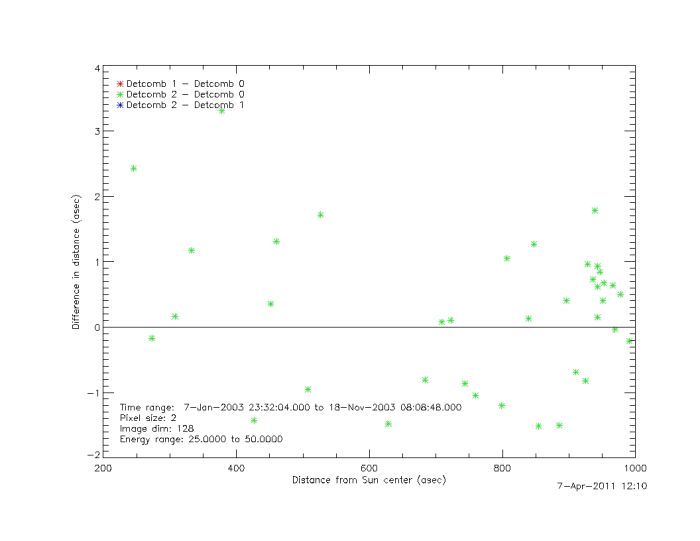Weekly Report 8Apr2011
RHESSI Albedo Imaging Test
RHESSI Clean Imaging techniques were used to image large groups of flares using different detector combinations and energy ranges. The following were used to create the Clean images:
- Time: Decided by the peak of a flare in the 25keV - 50keV range
- Energy: 12kev - 25keV, or 25keV - 50KeV
- Detectors: 3 to 9, or 3 to 6, or 6 to 9
- Clean Beam Width Factor = 2
For each energy range (12keV-25keV and 25keV-50keV) an image was made for each detector combination. Using the images the flux was measured for each detector combination. The centroids of each source was also measured. The differences in the centroid location were recorded to give the displacement of a compact or extended source from the complete source. In the final case the ratio of the flux in the extended sources in the 25keV-50keV band was taken with that of the compact source for the same flare in the 12keV-25keV band.
A discussion of all plots as a group follows below the final plot.
The plot below shows the difference in distance of the centroids using detectors 3-9 versus detectors 2-6 in the 12keV-25keV energy band.
The plot below shows the difference in distance of the centroids using detectors 3-9 versus detectors 6-9 in the 12keV-25keV energy band.
The plot below shows the difference in distance of the centroids using detectors 3-9 versus detectors 2-6 in the 25keV-50keV energy band.
The plot below shows the difference in distance of the centroids using detectors 3-9 versus detectors 6-9 in the 25keV-50keV energy band.
The plot below shows the ratio of the flux in the extended source in the 25keV - 50keV band divided by the flux in the 12kev - 25keV band.




